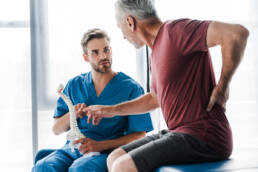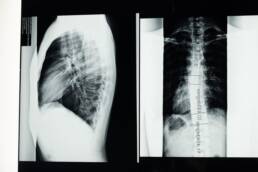Scoliosis is not a disease, but it’s a keyword used in describing abnormality characterized by a sideways curve of the spine. A normal spine, when viewed from the back, is straight. However, with scoliosis, the curvature of the spine can go three different ways:
- Levoscoliosis, where the curvature of the spine goes to the side as a single curve going to the left, which forms like a letter C.
- Dextroscoliosis, where the curvature of the spine goes to the side as single curve going to the right, which forms like a reverse letter C.
- The curve of the spine is formed like the letter S.
Causes of Scoliosis
Physicians are not certain what causes many common types of scoliosis – though it seems to involve genetic factors since the disorder is likely to run among families. Not-so-common kinds of scoliosis may be due to:
- Neuromuscular conditions like muscular dystrophy or cerebral palsy
- Defects at birth that affects spine development
- Spine injuries or infections
Detection
Scoliosis normally occurs in individuals ranging from 10 to 18 years of age and is sometimes detected through regular doctors check-up or school screenings. A medical professional will check for the following:
- The curve of the spine
- Shoulders that are uneven, or presence of protrusion of one shoulder blade
- Waistline asymmetry
- One hip higher than the other
Scoliosis Treatment
Treatment choices for scoliosis have three main categories:
- Observation of scoliosis
- Non-operative treatment
- Surgical treatment
Can Physical Therapy Help My Scoliosis?
Schroth Method, a type of physical therapy, can be effective in improving scoliosis. This method is useful in treating patients of various ages and in any treatment stage: before or after surgery and in cases where surgery isn’t indicated. From specific workouts and corrective breathing exercises, the method intends to stretch the trunk and correct the body’s imbalances. By developing the muscles on the inner rib cage, the method changes the upper trunk’s shape so that any spinal abnormalities can be corrected. As a result, there is decreased pain, reduced or halted the progression of curvature and there is improved mobility, postural stability, and cardiopulmonary functioning.
Patients suffering from scoliosis can find relief thanks to Denver physical therapy at Denver Physical Medicine & Rehab. To schedule your free initial consultation, please call 303-757-7280 now.
Ready for an expert opinion? Get in touch today!
Discover how physical therapy can help manage scoliosis in mild to moderate cases, along with other ways it offers healthcare solutions. Learn more from Dr. Mansi Dua, DPT, C2 Schroth Certified.
Like this article? Spread the word!
Related Posts
May 15, 2025
Comprehensive Guide to the Intensive Scoliosis Program at Denver Physical Medicine & Rehab
Discover the Intensive Scoliosis Program at Denver Physical Medicine & Rehab, offering…





